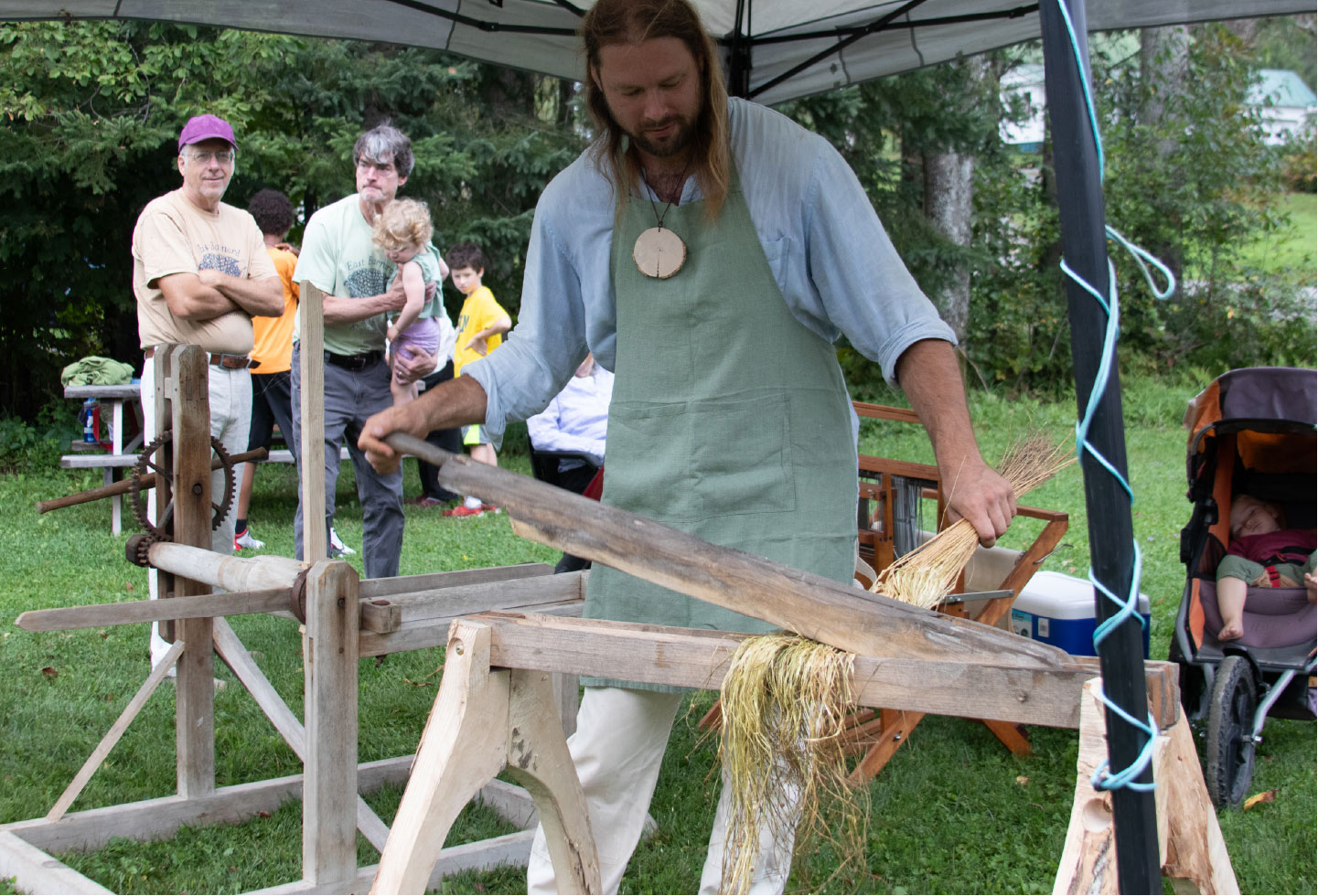
Flax, one of humankind’s oldest fiber plants, was domesticated about 11,000 years ago, and the source of linen remained important for textile products into the early 19th century in this country.
Early New Englanders grew flax to sell as a raw product or to spin for cloth until the industrial revolution brought mechanized production, with innovations such as the cotton gin, and looms which favored cotton. In the early 1800’s, local growers often raised, retted and swingled flax to sell to buyers who would ship it to larger processors, who would spin and weave the linen cloth. Hope Nash’s “History of Royalton” contains entries from Erastus Williams’ diary of 1832-33 where he mentions sowing, pulling, breaking, and swingling flax. “The Pomfret History” by Henry Hobart Vail mentions that flax seed was pressed to make linseed oil for furniture making, and the pressed seed cakes were fed to cattle. Today, aside from linen cloth, flax has been found to be useful in composites for covering wind turbine rotors and car seats, and is an agricultural product suitable for Vermont’s growing season. (Adapted from an article by Jo Levasseur for Our Herald in 2022).
Why does the United States not currently have a linen industry ? The answer is slavery and cotton. Why does the United Kingdom not currently have a linen industry? Because the East India Company and subsequent Indian colonisation made cotton much more affordable than linen and the mills of England were converted to cotton.
The answer is not that flax and linen cannot be profitable. Cotton, even organic cotton, requires vast amounts of irrigation. Non-organic cotton relies heavily on fertilisers and chemicals.

Why does the United States not currently have a linen industry? The answer is not that flax and linen cannot be profitable.